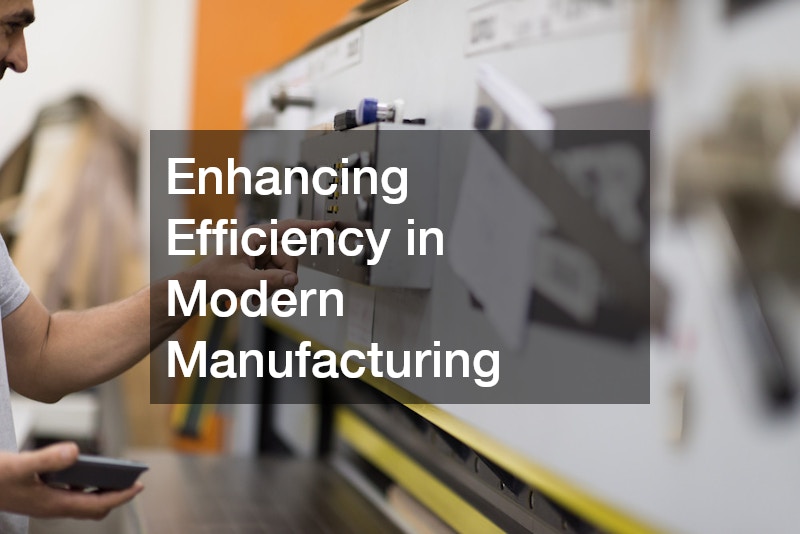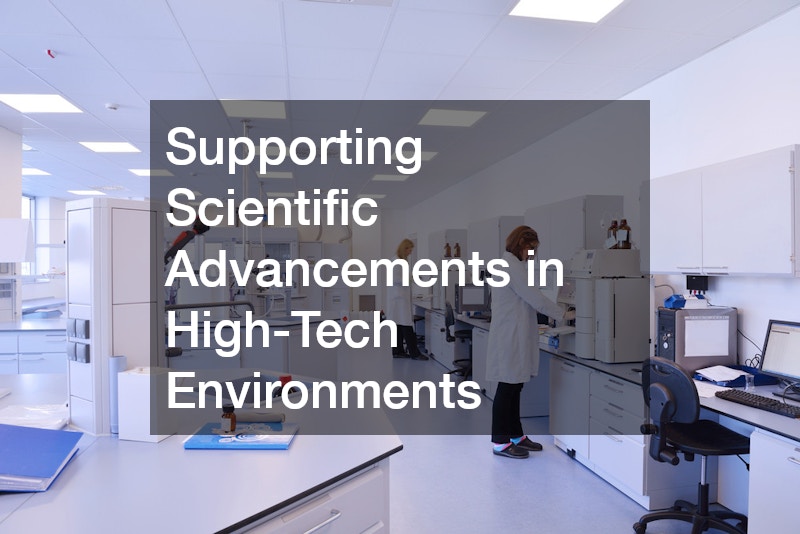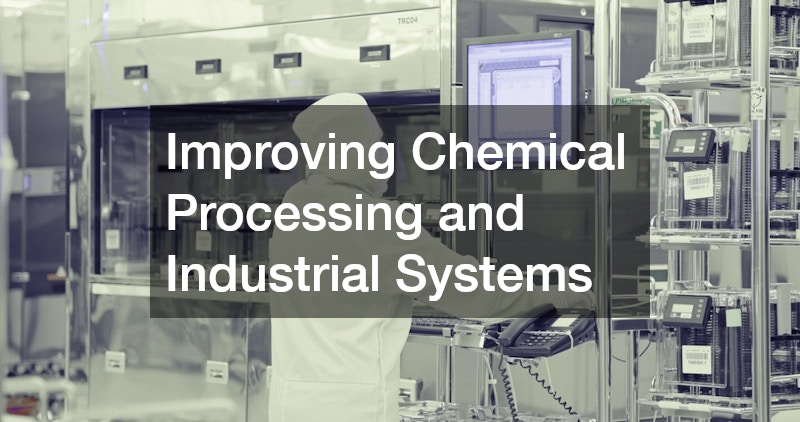Technology continues to reshape every aspect of modern life, and nowhere is this transformation more evident than within the tech industry landscape. From manufacturing floors to research laboratories, from construction sites to digital communication networks, innovation is not just a trend—it’s a defining force of progress. As automation, data analytics, and connectivity converge, industries are finding new ways to enhance productivity, sustainability, and precision. The integration of advanced systems allows companies to rethink how work gets done, reducing waste and improving results across sectors.
Emerging technologies are enabling smarter machines, safer workplaces, and more sustainable production processes. Concepts that once belonged to the future—like AI-driven manufacturing, robotic fabrication, and smart energy control—are now practical realities that shape global competitiveness. These changes are not isolated but interconnected, creating a web of advancement that redefines the boundaries of what industries can achieve.
This article explores how the next wave of industrial transformation is unfolding across critical areas of innovation. From automation and testing to safety and fabrication, each development contributes to a larger ecosystem where technology drives growth and efficiency. By understanding the patterns within the industry landscape, businesses can better position themselves for long-term success in a fast-moving digital age.
Automating the Future of Production
Automation has become the foundation of modern production, introducing a new era of precision, speed, and flexibility. Across the industry landscape, companies are embracing intelligent machinery and advanced control systems to perform tasks that were once time-consuming or labor-intensive. The ability to produce components or complete assemblies with minimal human intervention allows manufacturers to maintain consistent quality while scaling their operations efficiently.
At the heart of this shift lies robotic fabrication, a technology that combines robotics, artificial intelligence, and computer modeling to streamline production processes. Robotic systems can perform complex tasks such as welding, cutting, and assembling with remarkable accuracy. Beyond improving efficiency, they also enhance worker safety by handling hazardous materials or repetitive motions. This technology enables the creation of intricate designs that were previously difficult or impossible to achieve through manual methods.
As automation continues to evolve, industries are discovering new opportunities to reduce production costs and minimize errors. The integration of robotics into traditional manufacturing lines exemplifies how innovation can merge creativity with consistency.

Enhancing Efficiency in Modern Manufacturing
The industry landscape has always revolved around efficiency—how to do more with less while maintaining high standards of quality. Today, manufacturers are achieving new levels of performance by integrating advanced machinery with data-driven monitoring systems. These tools allow for real-time insights into production metrics, energy consumption, and output quality, helping companies optimize operations from start to finish.
A key component driving these improvements is industrial compressed air. Often referred to as the “fourth utility” alongside electricity, gas, and water, compressed air powers everything from pneumatic tools to automated equipment. Modern air systems are designed to reduce energy waste and support continuous production without costly downtime. With smart controls and variable-speed compressors, facilities can maintain consistent pressure while minimizing environmental impact and operational expenses.
As manufacturing becomes increasingly digital, efficiency will rely on connected networks and predictive analytics that guide decisions on maintenance and energy use. The ability to collect, analyze, and act upon real-time data ensures a more resilient and responsive production environment.
Innovation Through Precision and Performance Testing
Innovation thrives on accuracy, and within the industry landscape, precision testing has become an indispensable part of research and production. Whether developing new materials or optimizing product performance, testing ensures that every formulation, mixture, or device performs exactly as intended. In an era where even the smallest discrepancy can have major consequences, thorough testing has become a hallmark of industrial excellence.
One area making significant strides is formulation testing, a process that evaluates the performance, stability, and compatibility of chemical and material mixtures. It is widely used in sectors such as pharmaceuticals, cosmetics, coatings, and food production. By analyzing formulations under various environmental conditions, manufacturers can refine their products for better safety, durability, and consumer satisfaction. This level of precision not only improves quality but also accelerates innovation by identifying potential issues early in development.
As global standards continue to rise, accurate testing ensures that new products meet regulatory requirements and consumer expectations. Companies investing in advanced testing technologies are setting the pace for industries that value reliability and consistency. In a marketplace defined by speed and competition, innovation through testing helps maintain trust and credibility across diverse sectors.

Supporting Scientific Advancements in High-Tech Environments
The industry landscape is deeply influenced by the work of scientists and researchers who rely on cutting-edge tools and materials. Laboratories are at the center of technological advancement, conducting the experiments that lead to breakthroughs in medicine, energy, and materials science. The ability to achieve accurate, repeatable results depends not only on skilled personnel but also on the quality of the substances and equipment they use.
Among these essential resources are laboratory solvents, which play a critical role in research, analysis, and production processes. Solvents enable chemical reactions, assist in purification, and serve as carriers for testing and formulation work. Their quality directly affects the reliability of experimental outcomes, making them a cornerstone of scientific accuracy. High-purity solvents are increasingly important in fields such as biotechnology and nanotechnology, where even trace contaminants can distort results.
Advancements in solvent production and handling systems have improved safety, reduced waste, and supported the drive toward greener, more sustainable research practices. The fusion of scientific rigor and innovative tools will remain vital to sustaining progress in both academia and industry.
Safety and Connectivity in Hazardous Workspaces
As industrial operations become more complex, maintaining worker safety and communication has become a top priority. Within the industry landscape, companies are increasingly adopting specialized devices designed to protect personnel in potentially dangerous environments. These tools not only enhance safety but also ensure that teams remain connected and informed at all times.
One of the most significant innovations in this area is the development of intrinsically safe phones—devices engineered to operate safely in explosive or hazardous conditions. These phones are built to prevent sparks or electrical discharges that could ignite flammable gases or dust. They enable reliable communication in industries such as oil and gas, mining, and chemical manufacturing, where conventional electronics would pose a risk. Beyond safety, these phones often include rugged designs, extended battery life, and features like GPS tracking and push-to-talk communication.
Integrating such technology promotes efficiency while safeguarding workers and infrastructure. As industries embrace digital transformation, the combination of connectivity and safety ensures that teams can operate effectively even under the most challenging conditions. The result is a workplace that prioritizes both productivity and well-being.

Restoring Equipment to Peak Performance
In every industrial operation, machinery downtime can result in significant losses. Across the industry landscape, maintenance and repair play a critical role in ensuring that production lines run smoothly. Keeping equipment in top condition extends its lifespan and reduces the need for costly replacements, directly impacting the bottom line.
A specialized process known as rebabbitting is helping industries achieve this goal. It involves restoring worn bearings by replacing the lining material—commonly babbitt metal—to renew performance and reduce friction. This technique is essential for heavy-duty equipment used in power plants, refineries, and manufacturing facilities. By refurbishing existing components instead of replacing them entirely, companies can cut costs and minimize environmental impact.
Modern rebabbitting services often use precision machining and advanced alloys to deliver better durability and smoother operation. This focus on restoration over replacement aligns with the global push toward sustainability and resource efficiency. As industries continue to modernize, traditional repair techniques like rebabbitting are finding new relevance in the pursuit of long-term operational excellence.
Revolutionizing Construction and Infrastructure Maintenance
The industry landscape for construction and utilities is evolving rapidly, with new technologies reshaping how projects are completed. As infrastructure ages and cities expand, efficiency and environmental responsibility have become key priorities. Innovative methods are helping contractors work faster, safer, and with less disruption to surrounding environments.
A standout example of this progress is vacuum excavation, a technique that uses high-pressure air or water to safely expose underground utilities. Unlike traditional digging, which can damage cables and pipelines, vacuum excavation allows for precise, non-destructive excavation. It’s commonly used in urban development, road maintenance, and utility repair, offering a cleaner and more controlled approach to groundwork.
This method not only reduces the risk of costly accidents but also improves project timelines and minimizes restoration work. As smart cities and renewable infrastructure expand, technologies like vacuum excavation will remain central to sustainable development practices. They embody the shift toward safer, data-driven, and environmentally conscious construction.

Improving Chemical Processing and Industrial Systems
Efficiency, sustainability, and reliability are the driving forces behind modern chemical and process industries. Within the industry landscape, engineers constantly seek better materials and methods to optimize performance while minimizing waste. The quest for improved energy transfer, reduced emissions, and increased operational safety continues to inspire innovation across the sector.
A crucial component in these systems is random tower packing, a type of structured material used in distillation, absorption, and other mass-transfer processes. These packings provide a large surface area that enhances contact between liquids and gases, improving efficiency and throughput. Modern designs made from advanced plastics, ceramics, or metals are engineered to withstand extreme temperatures and corrosive environments.
The evolution of tower packing reflects the broader industrial goal of achieving higher efficiency through smarter design. By optimizing chemical reactions and heat exchange, these systems contribute to cleaner production and lower operating costs. As sustainability remains a global imperative, advancements in process engineering will continue to shape the chemical industries of tomorrow.
Powering Intelligent Automation Systems
Automation depends on reliable power and precise control. In the industry landscape, the drive toward smarter systems has made electrical control technology a crucial foundation for nearly every industrial sector. Machines, sensors, and robotics all rely on stable power management and responsive control mechanisms to function efficiently and safely.
At the core of these systems are motor control products, which regulate the performance of electric motors in everything from conveyor belts to robotic arms. These products include drives, controllers, and circuit protection devices that enable precise speed and torque control. They are essential in applications requiring accuracy, such as automated assembly lines and energy-efficient HVAC systems.
Advancements in motor control have also paved the way for predictive maintenance and smart energy optimization. With connected systems, operators can monitor performance remotely and make adjustments in real time. The result is a new generation of intelligent automation that blends power management with digital insight.
Shaping the Future of Custom Manufacturing
Customization has become a defining trend across the industry landscape, as businesses seek to deliver products that meet specific needs without compromising quality or efficiency. Advances in digital tools and manufacturing technologies are making it possible to produce bespoke solutions at scale, transforming industries that once relied on mass production alone.
A major contributor to this transformation is metal fabrication, which involves cutting, forming, and assembling metal components into complex structures. Today’s fabrication processes integrate computer-aided design (CAD), robotics, and automation to achieve precise and repeatable results. From aerospace components to architectural frameworks, the demand for specialized metalwork continues to grow as industries push the limits of performance and design.
As 3D modeling, additive manufacturing, and smart materials evolve, the boundaries of what can be built are expanding rapidly. Custom fabrication allows companies to innovate faster, creating prototypes and finished products with remarkable speed and precision.
The evolution of the tech industry landscape reflects a remarkable convergence of innovation, efficiency, and adaptability. Each advancement, whether in robotic automation, precision testing, or energy control, demonstrates how technology is not only changing individual industries but also connecting them into a cohesive global network. The pursuit of progress has led to smarter machines, safer environments, and more sustainable production systems that redefine what’s possible.
Technologies such as robotic fabrication, vacuum excavation, and motor control products exemplify how intelligence and automation now shape nearly every industrial process. Meanwhile, innovations in materials, solvents, and testing ensure that progress remains rooted in quality and precision. Together, these developments create an ecosystem where science, engineering, and digital intelligence intersect to drive the next phase of human achievement.
As industries continue to adapt, the focus will remain on a balance between speed and sustainability, innovation and reliability, automation and human expertise. The future of technology is not just about machines taking over tasks; it’s about empowering people and organizations to do more, with greater confidence and creativity. In this ever-evolving landscape, those who embrace change will lead the way toward a more connected, intelligent, and sustainable industrial future.
